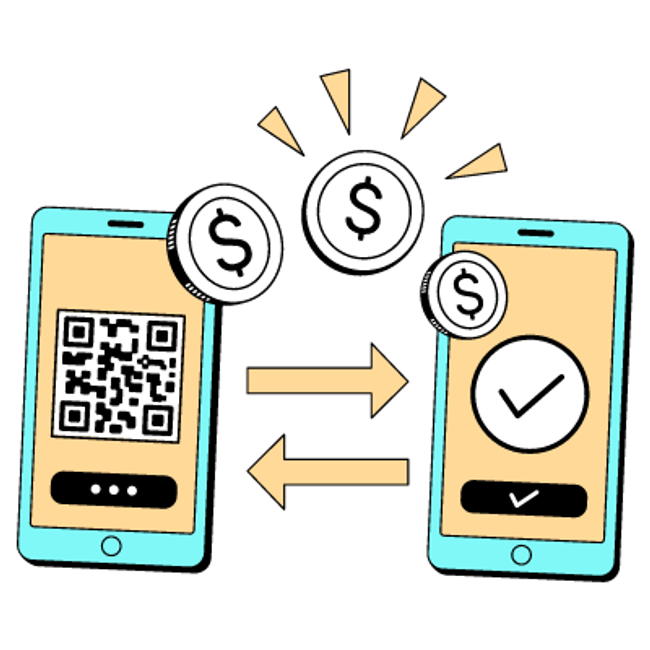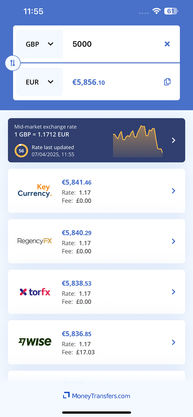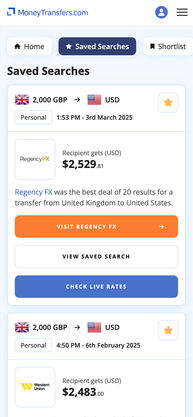What Details Do You Need To Transfer Money Abroad?
When sending money abroad, you will need to work with the recipient to prepare all the details needed. In general, these will depend on the transfer method you pick.
Here we'll outline all the details needed for international transfers. We'll look into bank transfers, card transfers, and making large transfers.
Search Now & Save On Your Transfer
Details you will need: Quick summary
When sending money you will need to provide both, your details as a sender and the recipient's details.
As a sender you will need
Your details
Bank or card details
Amount and currency you're sending
For the recipient you will need
Personal details
Account number
Sort code and/or IBAN
Bank name & address
PAYEE reference
Sender requirements for sending money abroad
As the sender, the details you’ll need to provide to send your money abroad depend on the payment method you are using.
Bank transfer
Transferring money abroad via bank transfer is one of the most popular payment methods. For this, you’ll need to provide the following:
Your name as it appears on your bank account
Your bank account number
Your sort code
The sum you are sending
The currency you need your funds converted into
Debit or credit card
Recipient requirements for sending money abroad
As well as providing your details to pay for your international money transfer, you also need several details to get your money to your recipient. This includes:
Recipient’s name
Account number
Sort code
IBAN
BIC or SWIFT codes
Bank name & address
PAYEE reference
Other details you might need
If you are using a money transfer service for the first time, you may need to provide additional details to verify your identity.
This could include:
A valid photo ID such as your passport or driving license
Possibly a bank statement or utility bill to verify your address and identity
Sending large amounts of money
Additionally, sending large sums of money can also require additional details.
The exact sum that can trigger the need for these extra details depends on the provider you are using, as the maximum sending limit and capabilities of each provider can vary by a large margin.
People sending large sums of money, such as for a property purchase abroad, may need to supply:
Source of funds (i.e. where you acquired the money you are transferring from)
Source of income (e.g. a payslip, bank statement, etc)
Any other documentation associated with your transfer - for example, property deeds, or letters from your solicitor for an inheritance transfer or property purchase.
What’s the Best Way to Transfer Money Abroad?
Before diving into the details you need to transfer money abroad, you may want to think about how you’ll get your funds to your recipient.
When sending money abroad, you have a few options:

Money transfer services
Money transfer services are by far the cheapest option to send money abroad. For example, you could use Wise to send money from your desktop or your mobile phone.
The details required will depend on the deposit method you choose.

P2P payments
P2P transfer, also known as P2P payments are mobile apps that let you send money from one app to another.
For example, you could use Revolut or Venmo to transfer money.
In most cases, these will only require the recipient's phone number.

Multi-currency accounts
Multi-currency accounts are a good option if you want to store and convert currencies before sending.
Again, a Wise multi-currency account is a great option to start.
You will need the card details of the recipient to send them money unless they also have the same multi-currency account.
We’ve covered more details on the best money transfer providers to use in another guide here, but our top recommendation is to always compare providers whenever you’re sending money abroad.
Find the best service for your specific transfer needs
Let's recap: What do you need to send money?
It’s a good idea to be prepared with all the details you need to start your money transfer abroad ahead of time to prevent unnecessary delays and complications.
First, decide what transfer provider you’re using - our comparison engine is a good place to start - and then decide how you want to pay for your transfer.
Provided you have your recipient’s details to hand, you should be able to set up your transfer within a couple of minutes.
Sources & further reading
Related Content


Contributors








